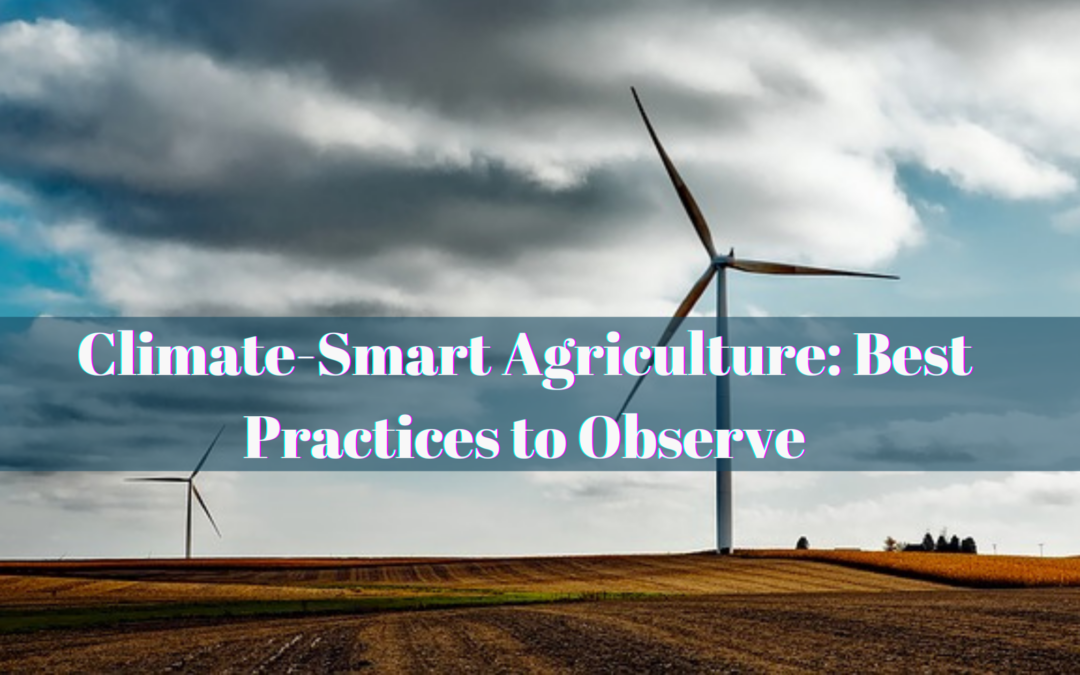Climate-smart agriculture is a form of practicing agriculture in a way that addresses economic, and social sustainability, and environmental practices of the on-farm processes. If practiced well, it results in safe and quality production of food and non-food agricultural products and also improves the environment. Farmers have been in the front line in facing the impact of worsening climate impacts alongside the risk of wildfires and extreme weather events such as droughts and floods.
The best way that farmers can adopt to help engage in a climate-resilient form of agriculture is by deploying solutions that emerge from the collaboration of farmers with scientists and other stakeholders. Farmers through such collaborations can gain insight on how to develop and share management practices that helps in storing carbon and mitigates climate change. Through such collaborations, they can also gain insight on how to protect biodiversity, improve soil and water quality and also engage in measures that strengthen farmer’s bottom line.
Here are some of the smart agriculture best practices that farmers should consider adopting;
Sequestering carbon and reducing greenhouse gases
The millions of acres of farmed land have the potential of trapping and storing carbon and can also help with reducing greenhouse gases from the atmosphere. Farmers should have a clear climate plan in place that’s aimed towards improving nature and capturing carbon to help reduce greenhouse gas emissions. The farmers should engage in practices that help support nature’s resilience and in turn, improves the quality of life.

Various government bodies in different countries have set up targets that are aimed at reducing greenhouse gas emissions to very lower levels by 2030 and towards net-zero emissions by 2050. Smart agriculture should entail the engagement of the farmers in collaboration hubs where farmers can gain valuable knowledge on innovative practices and on-farm activities that they can adopt to help promote environmental sustainability and resiliency in the agricultural sector.
Soil and water conservation
Having rich and healthy soil is the desire of every farmer. Farmers should consider using cover crops or embracing intercropping practices as such can to a great extent improve soil quality. Such practices can also help trap and store more carbon in the soil while also reducing the negative environmental effects that happen as a result of soil erosion.
Farmers should identify ways of conserving clean water which is not just essential for the human population but for healthy crops as well.
Water is quite essential when it comes to practicing agriculture and farmers should consider engaging in farming practices that help in conserving one of the human’s greatest resources in a way that safeguards clean water for the communities as well.
Protecting Biodiversity
Biodiversity entails the variety of life that ranges from tiny microorganisms to plants, animals, and humans. Smart agricultural practice should be undertaken in a way that protects the biodiversity of life that exists on the farms and this can result in having healthy fields that will reduced pest problems.
P.S: – Please visit our EAT Community to learn more. This is where you can make a little money while making the planet better!


Recent Comments